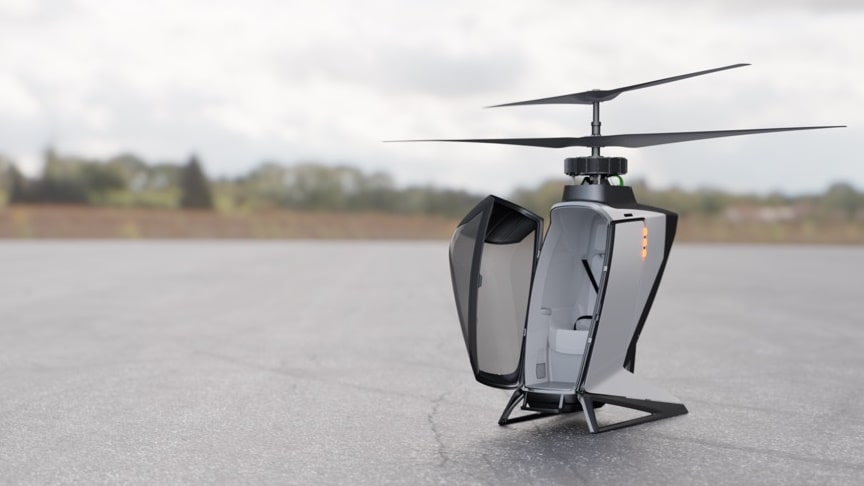FlyNow Aviation presenting their vision of Urban Air Mobility – a single seater Airtaxi, automatically piloted and operated, an aircraft design which guarantees efficient operability, leading to an excellent business case, creating outstanding customer value and as such being affordable for everyone.

source-image: flynow-aviatio
The single seater Airtaxi has a maximum takeoff weight of 360 kg, a flight time of 30 minutes, a maximum velocity of 130 km/h, and an approximate range of 50 km. The vehicle uses two fixed pitched rotorblades, eight electric motors and batteries to power the aircraft.

source-image: flynow-aviatio
Future models will use a hydrogen-electric power source.However, using an all electric powertrain allows each rotorblade to change its RPM for directional control. Also the entire rotor assembly can be tilted allowing thrust vectoring to control the aircraft.

source-image: flynow-aviatio
When it comes to safety – as is customary in commercial aviation anyway – we make no compromises whatsoever. That’s why all critical systems are redundant. Each rotor is driven by its own electric motor, which in turn consists of four independent units. In other words, a fourfold “safety net” against possible motor failure.
Advertisement
Should one of the motor segments fail, it will be substituted by the three remaining ones and due to our coaxial concept of two counter rotating rotors, acting along one main center line, there would also be no change to the flight behavior.
The drones are also optimally protected against collisions: should their flight path cross that of a rescue helicopter, for example, they simply remain stationary in the air for a moment. Larger birds usually take evasive action at the cruising speed of 130km/h, but are also detected by our sensor technology to be able to fly an evasive maneuver.









